Welcome to Dream India Women’s charitable trust
Our Projects

1.TECHNICIAN
10th pass,
2 years course and approved by NCVT
Mechanical fitters use a range of tools and engineering techniques to maintain and repair mechanical plant machinery and equipment to operational standards. Work includes the identification of defective or worn mechanical components or equipment, repair/replacement of worn/faulty components or equipment, and modifications. Parts may be repaired or manufactured using the general application of workshop machines. Mechanical fitters also use precision measuring instruments to check parts for accuracy and fit.
2.ELECTRICIAN
10th pass,Eligible for B License
2 years course and approved by NCVT
An electrician is a tradesperson specializing in electrical wiring of buildings, stationary machines and related equipment. Electricians may be employed in the installation of new electrical components or the maintenance and repair of existing electrical infrastructure.[1] Electricians may also specialize in wiring ships, airplanes, and other mobile platforms also data and cable.
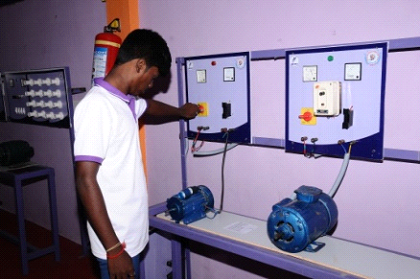

3.WIREMAN
8th pass / 10th fail, Eligible for B License
2 years course and approved by NCVT
A person skilled in wiretapping a person who installs and repairs electrical wiring, cables, etc. One who works with electric wiring. One who taps telephone lines; a wiretapper.
4.WELDER
8th pass / 10th fail,
1 years course and approved by NCVT
A welder or welder operator is a tradesman who specializes in welding materials together. The term welder refers to the operator, the machine is referred to as the welding power supply. The materials to be joined can be metals (such as steel, aluminum, brass, stainless steel etc.) or varieties of plastic or polymer. Welders typically have to have good dexterity and attention to detail, as well as some technical knowledge about the materials being joined and best practices in the field
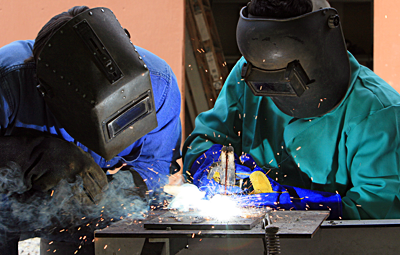
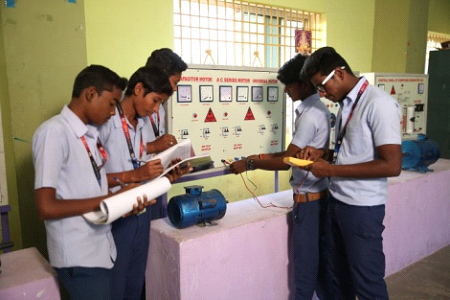
5.ELECTRICAL/TECH
8th pass / 10th fail,
1 years course and approved by Svct
Electrical engineering technology (EET) is an engineering technology field that implements and applies the principles of electrical engineering.[1] Like electrical engineering, EET deals with the "design, application, installation, manufacturing, operation and/or maintenance of electrical/electronic(s) systems."[2] However, EET as a discipline is generally more focused on application and implementation, while electrical engineering may place more of an emphasis on theory and conceptual design.[3] Electrical engineering technology is the largest branch of engineering technology and includes a diverse range of sub-disciplines, such as electronics, embedded systems, control systems, instrumentation, telecommunications, and power systems.
6.AUTOMOBILE MECH
8th pass / 10th fail,
1 years course and approved by Svct
Automobiles are used to transport people and items from one location to another location. After years or various designs, inventors were able to develop a functional general design that is utilized by major automakers as the foundation of their designs. Automobiles generally use gasoline to fuel the internal engine, but technological advances have led to the design of cars that run on electricity and even water. A vehicle (from Latin: vehiculum[1]) is a mobile machine that transports passengers or cargo. Most often, vehicles are manufactured, such as wagons, bicycles, Motor vehicles (motorcycles, cars, trucks, buses, trains), watercraft (ships, boats), spacecraft and aircraft
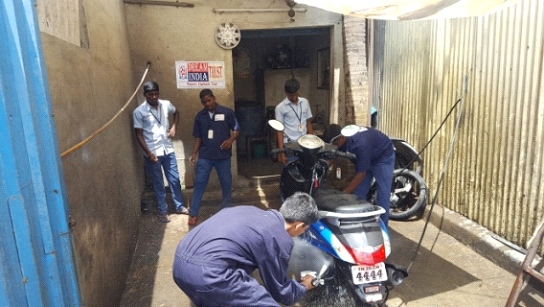

7.BENCH FITTER
8th pass / 10th fail,
1 years course and approved by Svct
It is normal filing / small fixings/ chippings/ sawing operation. A bench fitting is a mechanical job work done using a bench vice to hold the job and the operation with normal manual tools.
8.WELDING TECHNICIAN
8th pass / 10th fail,
1 years course and approved by Svct
Welding is a fabrication or sculptural process that joins materials, usually metals or thermoplastics, by causing coalescence. This is often done by melting the workpieces and adding a filler material to form a pool of molten material (the weld pool) that cools to become a strong joint, with pressure sometimes used in conjunction with heat, or by itself, to produce the weld. This is in contrast with soldering and brazing, which involve melting a lower-melting-point material between the workpieces to form a bond between them, without melting the work pieces.
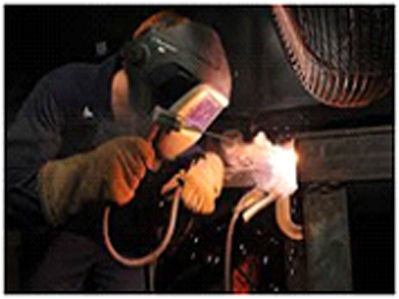

8.A/C REF.MECHANIC
8th pass / 10th fail,
1 years course and approved by Svct
Air conditioning (often referred to as A/C, AC or aircon) is the process of altering the properties of air (primarily temperature and humidity) to more comfortable conditions, typically with the aim of distributing the conditioned air to an occupied space to improve thermal comfort and indoor air quality.
